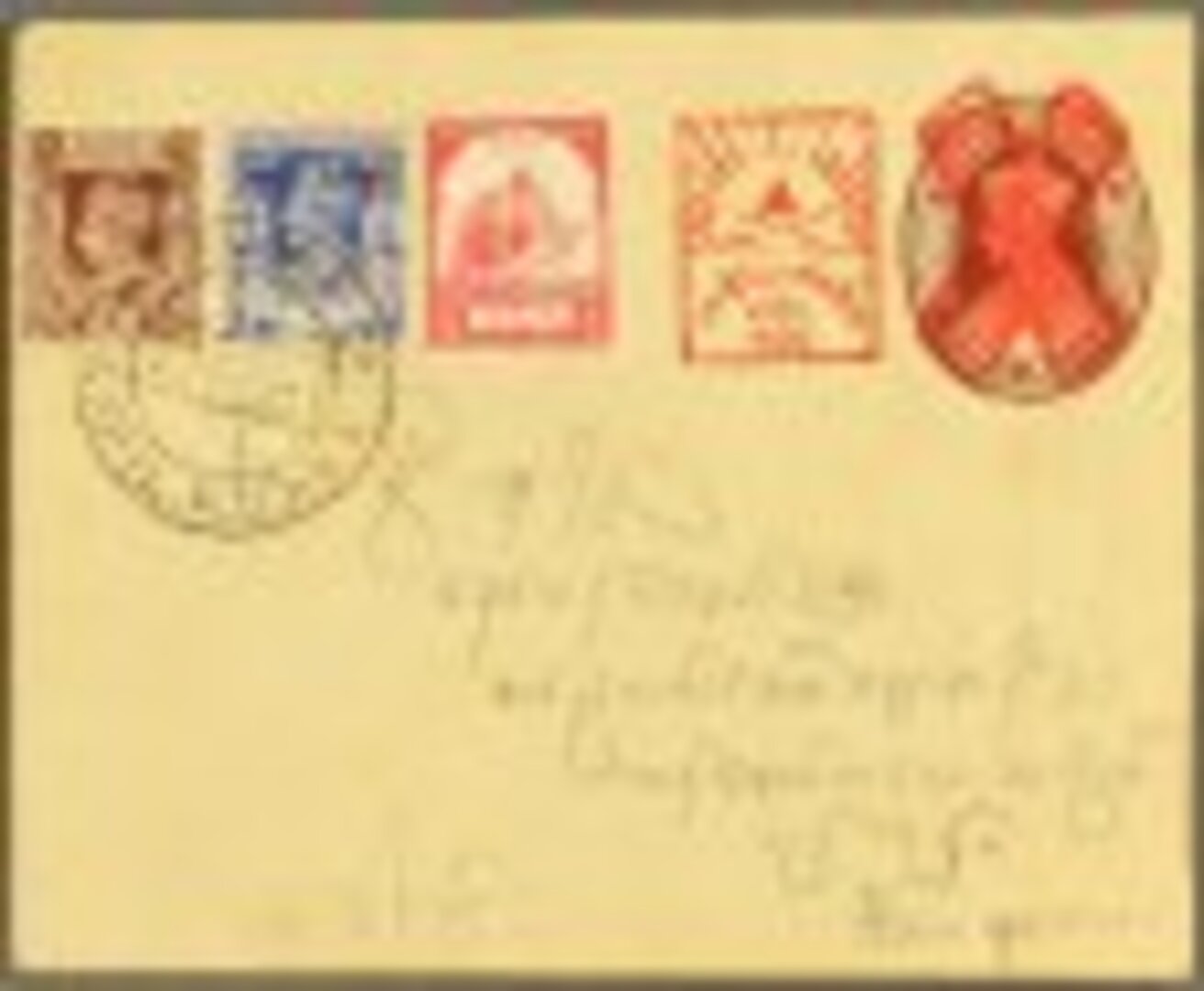The Japanese invasion of Burma took place only days after it had declared war against Great Britain in early December 1941. Whilst this was seen to be an act of aggression through much of the world, there were certain political factions within Burma who were sympathetic toward the new invaders as they held a genuine belief in Japan’s promise to give Burma independence shortly afterwards. A number of Burmese already considered that Britain had been an occupying force since 1886 when it had become a province of British India, indeed before the Japanese invasion there were many who had campaigned for an independent Burma, free from any colonial rule.
The almost unique complicity shown by the Burmese Government provides an important clue in helping to understand the sheer size and range of philatelic material produced during the relatively short time the country was occupied. It also demonstrates how different administrations dealt with the practical difficulties they encountered, during what was to be one of the bitterest and hardest fought campaigns of the war in the Far East.
On the 1st August 1943 Japan did indeed declare Burma to be an independent nation, though by then the same factions had become increasingly disillusioned, realising that their new ‘independence’ was without foundation.
Japan entered World War II partly to satisfy a growing domestic demand for commodities, including oil. Japan wanted to secure and control the supply of these raw materials from European possessions in South East Asia. The invasion forced an Allied retreat northwards to India and China as the Japanese secured their main objective, a complete blockade of China, leaving previously British controlled districts in the South to Japanese administrators.
Included in this sale are examples of stamps and covers from each of the different Burmese postal administrations in operation as the fortunes of the conflict changed. Burma’s situation was not finally resolved until the Japanese surrender in 1945 and beyond to 1947 when Burma finally gained its independence. What of the stamps themselves? For a short time after the invasion, existing stocks of overprinted British Indian stamps were used, subsequently new designs followed. There were three separate sources. These were the stamps issued by the Burma Independence Army, the Japanese Army Administration and the Burmese Government.
The Burma Independence Army was led by Major-General Aung Sang (1915-1947) an influential political activist who had been trained in Japan and who initially offered his support to the Japanese. By May 1942, the BIA had been given a certain level of autonomy and was allowed to administer certain districts left by the British, particularly those in the Delta Region, and this included the authority to issue postage stamps.
In the immediate aftermath of the invasion, in order to maintain an essential postal service, it was agreed to use those Burma definitive stamps bearing King George V and King George VI which remained in stock. It was a pre-requisite that the monarch’s head was obliterated. To effectively achieve this, an image of a peacock, the national emblem of Burma, was chosen. The BIA used seven different design variants of the overprint in red, black and blue inks. These stamps included a wide range of values up to the 1r & 2r high values and are now generally referred to as the ‘Peacock Overprint’ issues.
The Japanese Army Administration agreed to the appointment of Mr Yano Shizuo as Post Master General of the Burma Postal Service. From June 1942 a series of Provisional stamps were issued. Known as the ‘Yano Seal’, these perforated stamps bore only his personal seal in red ink and were printed on a poor quality, thick yellowish ungummed paper. A later design followed showing a farmer with oxen ploughing a field. There were eight stamps in that series which include a number of errors popular with collectors. From October 1942 additional surcharged values were applied. During this time there were serious shortages of paper and inks. Mr Yano Shizuo sought assistance from the Japanese authorities who supplied sets of Japanese stamps with values of 1 to 30 Sen. The stamps were surcharged with denominations for use in Burma. They show pictorial scenes and are referred to as the ‘Showa Series’.
The Japanese Army Administration handed over control of the postal service to the Burmese Government in November 1942. The first definitive issues included simple designs in red showing a Burmese warrior’s helmet and crossed swords with a rising radiating sun in the background.
Further stamps followed on August 1st 1943 to celebrate the Japanese declaration of Burmese independence. Here various pictorial images showing people, indigenous animals, flora, local architecture and Burmese landscapes. The ‘independence’ granted was a hollow victory lasting until the defeat of Japan in 1945, when plans were confirmed after British rule returned for real independence, that was finally achieved in 1948.
Interestingly the postal stationery on offer in this sale also traces the development of the conflict with ‘Peacock’ overprinted British India items, then British Indian items obliterated with large red crosses over the Kings portrait, then with Japanese Military Administration cachets alongside, then the same obliterated items with British Military Administration cachets alongside, then the same items with the addition of new Burmese stamps!
The stamps and postal stationery issued around Burma’s wartime experience are an important historical reminder of the practical responses given by administrators and the military to the essential requirement that an efficient postal service be maintained, despite the hardships that were endured.


 General
General
 General
General
 General
General